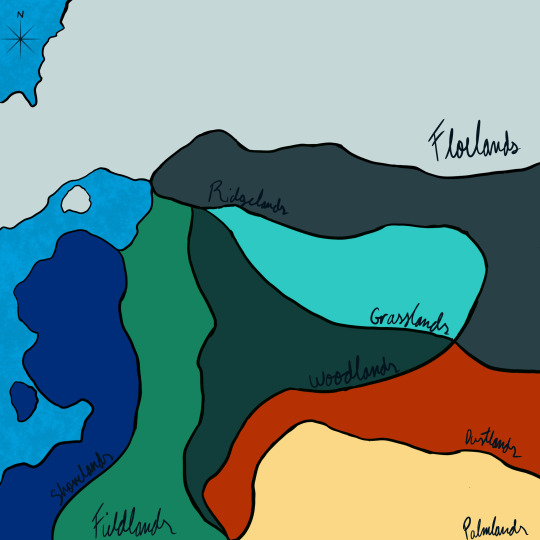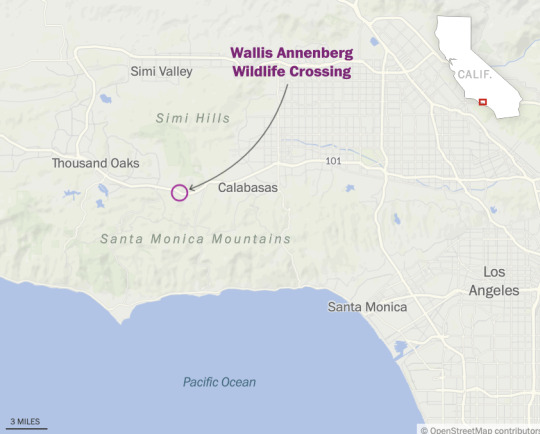#coastal sage scrub
Explore tagged Tumblr posts
Text

Half burnt brush
#wildfires#Coastal sage scrub#Burnt#Irvine#orange county#california#original photographers#photo#digital
3 notes
·
View notes
Text

White-crowned Sparrow Zonotrichia leucophrys
Orange County, CA, 12/2/23
0 notes
Text

Isomeris arborea (Bladderpod)
#studdedblurb#isomeris arborea#planta#plants#natural history#flowers#flora#florales#botany#coastal sage scrub#花#cleome#spiderflower#bladderpod
0 notes
Text

Excerpt from this story from The Revelator:
At first glance the hills and valleys covered in coastal sage scrub oak are little more than a featureless green swath. On closer inspection, however, you can recognize it for what it truly is: the beating heart of one of the most genetically rich ecosystems on the planet. Birds, insects, mammals, fungi, and even some other plants find refuge under the boughs of coastal sage scrub oak, while water drawn up from its deep roots spreads out to sustain ground-dwelling organisms.
Species name:
Coastal sage scrub oak or Nuttall’s scrub oak (Quercus dumosa)
Description:
The coastal sage scrub oak rarely grows more than about 7 feet tall, but it can spread outward a great distance thanks to its lateral branches and multiple trunks. The trees’ small, spiny leaves emerge in the spring soft and bright green, but gradually toughen and darken to a dusty dark green by summer. Their acorns tend to be thin and elongated, almost conical.
Where it’s found:
The coastal sage scrub oak, as its name implies, is found along coastal areas in Southern and Baja California. The full extent of its range is the subject of spirited debate, as it shares many similar physical characteristics with other scrub oaks found more inland. In San Diego County, the remaining populations of coastal sage scrub oak exist in fragmented populations, usually in wildlife reserves, like islands in a sea of urban development.
IUCN Red List status:
Endangered
Major threats:
Urban development destroyed much of this tree’s habitat, and its remnant population still faces this threat, along with several others. The introduction of grasses and other highly flammable nonnative species, like eucalyptus, have increased fire frequency and intensity. Escaped ornamental plants and grasses can outcompete oak saplings for light, space, and water. And climate change is resulting in disruptions to precipitation, which stresses all populations.
My favorite experience:
While collecting tissue samples after a spring rain, I took a moment to look at the tracks imprinted into the soft ground. Animal prints were everywhere — mule deer, raccoon, fox, opossum, roadrunner, and what I hoped were those of an exceedingly large bobcat and not a mountain lion. I rarely saw any of these animals during the day but, thanks to the rain, it was clear that they were all around me — present but hidden within the oaks.
My favorite experience:
What I could see, however, were the many birds flying from tree to tree, reminding me of fish swimming among outcrops of coral. Insects buzzed all around. Galls created by tiny wasps were starting to grow from some of the oaks. By summer, some of these galls would grow to the size and color of a peach, bobbing slowly in wind scented with wildflowers, sunbaked dust, and sagebrush. I knew that under my feet deep roots reached toward the precious groundwater that would sustain the forest during the dry season, and spreading from those roots were mycorrhizal fungi that would work with the oaks to support each other.
I grew up among the firs, cedars, hemlocks, and maples of the Pacific Northwest. I always thought forests needed to be composed of tall, majestic trees christened with carpets of rolling moss. Yet this sea of small, scraggly oaks held so much life. My perspective grew. It’s one thing to read about this ecosystem and another matter entirely to truly see it and understand how precious it is.
5 notes
·
View notes
Text
BOTD: California Gnatcatcher

Photo: Bridget Spencer
"Until the late 1980s, this bird was regarded as just a local form of the Black-tailed Gnatcatcher. With its recognition as a full species, it also became an endangered species: its limited habitat along the southern California coast is being taken over by housing tracts and other developments. California Gnatcatchers live in coastal sage scrub, a low shrubby habitat that is also home to other specialized animals and plants."
- Audubon Field Guide
#birds#california gnatcatcher#birds of north america#north american birds#gnatcatchers#passerines#birds of the us#birds of mexico#birding#bird watching#birdblr#birblr#bird of the day#Polioptila californica
28 notes
·
View notes
Note
What is your favorite biome? / (If no particular favorite) what is the one you have the most experience with?
I LOVE the painted desert, love the temperate rain forest, sage brush steppe is to die for, but in my heart I'm a coastal sage scrub kid til I die.
We are so often drawn to the things we already know, and I love that imperiled little community!
Reblog if you want your followers to anonymously ask you one thing they want to know about you.
14 notes
·
View notes
Text

Tidepools of La Jolla, California – Nursery of The Pacific Ocean Marine Life - Torrey Pines, California – San Diego Pacific Ocean Beach Adventure
youtube
To the north and east of the beach Los Peñasquitos Marsh Natural Preserve is one of the last remaining salt marsh areas and waterfowl refuges in southern California. The marsh, coves, and tidepools are rich in sea life: limpets, shore crabs and hermit crabs, mussels, barnacles, sea anemones, and many species of snails and cast-off shells.
This is the perfect place to watch the annual gray whale migration. All year round, you can see Seals, dolphins, porpoises, and sea lions in the ocean. About two hundred species of birds are protected at the reserve, including migratory ones.
Year round Resident shore birds include brown and American white pelicans, black-bellied and snowy plovers, American avocets, western sandpipers, willets, whimbrels, sanderlings, great egrets, and longbilled curlews. Occasionally, visitors may see gray foxes, bobcats, coyotes, and mule deer. Reptile residents include rattlesnakes and various other snakes and species of lizards, including the endangered horned lizard.
The Torrey Pines 2,000-acre reserve contains about 300 endangered and protected species of native plants. These vanishing habitats are home to sand verbena and beach primrose on the beach, as well as California sagebrush, California buckwheat, black sage, and coastal barrel cactus. On the cliffs other high elevations there are many chaparral plants, including chamise, manzanita, ceanothus, California scrub oak, toyon, and mountain mahogany. Many of these scrub plants in particular provide the refreshing herbal fragrance that mixes so incredibly with the ocean breeze.
Before this area was colonized by Spain, the Kumeyaay tribes migrated lived here, and migrated between here, the deserts, and the mountains throughout the seasons. The land was bountiful, and the Kumeyaay would have fished, hunted, collected crustaceans, and gathered seeds, fruit, roots, to create probably a very healthy and tasty diet. The Kumeyaay have left an indelible archaeological and cultural legacy here in San Diego county and they continue to be a strong tribal nation today both here and south of the border in Baja Norte state.
The water is usually so clean and clear here, and because of the lack of shoreline development, and the underwater marine reserve, this constantly ranks as one of the 3 cleanest beaches in SoCal. This is a wonderful rare instance of extremely valuable real estate, both being a wildlife refuge and habitat, and a beautiful escape from civilization for people to enjoy for the most part in harmony.
It’s been an incredible day on the coast here in Torrey Pines and La Jolla, and I’m so glad that we were able to explore my favorite beach together. You can enjoy my series: Torrey Pines – La Jolla, California – San Diego Pacific Ocean Beach Adventure, full length, 3 glorious days on the North County coast, and experience all of the different moods and landscapes from the ever-changing interplay between the coastal inversion and sunlight.
youtube
Full Length Video: https://www.youtube.com/watch?v=eLyySza85jA
Thank you so much for joining me for this adventure in my favorite beach town on the west coast, the gem of the San Diego coastline, La Jolla, California. It means the world to me to be able to share my treasured slice of heaven in the summer heat with you, and thank you so much for watching, upvoting, commenting, and subscribing.
All the best,
William Z. Brennan & Desert Mountain Apothecary
Please Enjoy Anza Borrego Desert Wildflower Superbloom – We had the most incredible wildflower superbloom in the California Desert this past year, join me from the beginning of the cold winter through the waves of dazzling blooms to the hot end of the season.
youtube
Web: https://desertmountainapothecary.com/
Medium: https://desertmountainapothecary.medium.com/
Mastodon: https://mindly.social/@DesertMountainApothecary
Spoutible: https://spoutible.com/DesertMountainApothecary
Pinterest: https://www.pinterest.com/desertmountainapothecary/
Reddit: https://www.reddit.com/user/desertmtnapothecary/
Tumblr: https://www.tumblr.com/desertmountainapothecary
Please Enjoy More Videos!
Supreme Superbloom! Anza Borrego Desert Spring Wildflowers! - https://www.youtube.com/watch?v=jGDPHEmN3v8
Grateful Desert Ocotillos - https://www.youtube.com/watch?v=Bstybc3XcAk
Coyote Canyon Offroad Adventure! - https://www.youtube.com/watch?v=WQYPvqj2ouU
Julian & Santa Ysabel, CA Epic San Diego Backcountry Road Trip- https://www.youtube.com/watch?v=r2Z_o0S4Hpg
Bellport in Spring - https://www.youtube.com/watch?v=_J9hzsFhS-k
Santa Ysabel Preserve – Backcountry Hiking - https://www.youtube.com/watch?v=2XLrSJMLXUw
#youtube#california#southern california#beach#travel#la jolla#socal#north county san diego#san diego#ocean#Tidepools#Tide Pools#Tide-pools#Marine Biology#nature
3 notes
·
View notes
Text
Map of Runnet
Here's the map of Runnet with all labeled lands and my terrible handwriting!
I also provided some examples of the general landscapes of the regions!

The Grasslands Kingdom
Governing Body: The Royal Family of the Diamants and the Chamber of Merchants
Major Ecosystem: Tall Grass Prairie
Examples: Montana Valley and Foothill Grasslands, Central Forest-Grasslands Transition, Texas Blackland Prairies
The Woodlands Kingdom
Governing Body: The Royal Family of the Emeraudes
Major Ecosystem: Temperate Rainforest and Coniferous Forest
Examples: Northern California Coastal Forests, The Cascades, Atlantic Coastal Pine Barrens
The Palmlands
Governing Body: The Hall of Scholars
Major Ecosystem: Sandy, Hot and Dry Desert
Examples: Mojave Desert, Chihuahuan Desert, Yuma Desert
The Grand Shorelands Temple
Governing Body: The Grand Temple of Astrea
Major Ecosystem: Costal
Examples: Florida Scrub, California Coastal Sage and Chaparral, Hawai'ian Tropical Low Shrublands
The Republic of the Dustlands
Governing Body: The Seven Heads of Council of the Dustlands
Major Ecosystem: Rocky, Semi-Arid Desert
Examples: Colorado Plateau Shrublands, The Painted Desert, Tule Desert
The Fieldlands
Governing Body: Small and Localized to Individual Villages
Major Ecosystem: River Valley and Temperate Broadleaf Forests
Examples: Alleghany Highlands forests, New England-Acadian forests, Western Great Lakes Forests
The Holy Kingdom of the Ridgelands
Governing Body: Church Appointed Monarchy
Major Ecosystem: Mountainous
Examples: Klamath Mountains, Sierra Nevada, Rocky Mountains
The Floelands
Governing Body: Figurehead Monarchy
Major Ecosystem: Tundra
Examples: Alaska–St. Elias Range Tundra, Pacific Coastal Mountain Icefields and Tundra, Arctic Foothills Tundra
#under the eyes of themis#eyes of themis#uteot#image reference#runnet lore#grasslands kingdom#woodlands kingdom#dustlands republic#dustlands#palmlands#fieldlands#ridgelands kingdom#ridgelands#shorelands temple#shorelands#floelands
3 notes
·
View notes
Video
California Gnatcatcher by Grigory Heaton Via Flickr: This small bird is endemic to southern California and the Baja California peninsula. In (Alta) California, it is only found in coastal sage scrub south of Ventura county. Bolsa Chica Ecological Preserve
12 notes
·
View notes
Text

California Coastal Sage Scrub
3 notes
·
View notes
Text

Whiting Ranch Wilderness Park
#badlands#Coastal sage scrub#Whiting Ranch Wilderness#portola hills#orange county#california#photo#digital#Sunset#original photographers
2 notes
·
View notes
Text

Orange County, CA, 3/28/23
Song Sparrow, Melospiza melodia
1 note
·
View note
Text
Amid roadkill epidemic, California builds world’s largest wildlife bridge. (Washington Post)

The 10-lanefreeway that slices through this part of Southern California is one of the busiest in the country, ushering more than 300,000 cars acrossthe greater Los Angeles area every day.
For drivers, it’s a nightmare: This stretch of Highway 101 is known as the “highway from hell,” the infamous host of the nation’s worst commutes.
But if the 101 is bothersome for bipeds, it is downright disastrous for the wildlife that alsocalls the region home. The 101 cuts like a chain saw throughavibrant natural ecosystem of coastal sage scrub and oak trees interspersed with suburban neighborhoods, disrupting the movement of animals and threatening their survival.
Now a massive infrastructure project is underway to suture together the vast tracts of fragmented wildlife habitat that have been separated by the highway for decades. Construction on a key phase of the Wallis Annenberg Wildlife Crossing — a $100 million structure funded by a mix of public and private money — began last month and it is expected to open in early 2026.
The bridge will be the largest of its kind in the world, spanning the highway at roughly the size of a football field,and it will reconnect the undeveloped sections of the Santa Monica Mountains with those of the Simi Hills. The new pathway will be a boon for the rare and struggling species that are trying to subsist amid the sprawl, especially mountain lions, whose local population could perish without it, say the scientists who study the animals.
The crossing has inspired an influx of government and philanthropic investment for similar ventures across the country, and it has become a beacon of cohabitation during an age indelibly shaped by human activity, when many of Earth’s vulnerable species are facing the prospect of extinction propelled by a roadkill epidemic. If a wildlife crossing can work in the cradle of American car culture, proponents say, then it can work anywhere.
“When the number one threat to wildlife worldwide is the loss of habitat, we can’t write these places off,” Beth Pratt, the project’s lead fundraiser and chief spokesperson, said of urban areas like Los Angeles. “Environmentalists like me usually don’t like bulldozers, but this is the world’s most hopeful construction site.”
4 notes
·
View notes
Text
Escape to the Natural Beauty of Santiago Oaks Regional Park in Orange, CA

Nestled in the picturesque hills of Orange, CA, Santiago Oaks Regional Park provides a tranquil escape for nature enthusiasts and outdoor adventurers. The park’s diverse landscapes, abundant wildlife, and variety of recreational opportunities make it an ideal retreat from the hustle and bustle of city life. Whether you’re drawn to hiking, birdwatching, or simply relaxing in nature, Santiago Oaks offers a captivating experience that showcases the charm of Southern California's outdoors.
https://mysteamgreencarpetcleaningoc.com/
Traverse the Scenic Trails
Santiago Oaks Regional Park features an extensive network of trails that meander through oak woodlands, open meadows, and rugged hillsides. With trails of different difficulty levels, the park welcomes everyone from casual walkers to avid hikers. Visitors can soak in expansive views of the surrounding landscapes and explore diverse ecosystems along the paths. The trails are also popular for mountain biking and horseback riding, adding to the park’s appeal as a versatile destination for outdoor activities in Orange, CA.
Encounter Wildlife and Native Vegetation
The park is a haven for wildlife, with sightings of deer, coyotes, and various bird species being common. Birdwatchers will find it an ideal location for observing both local and migratory birds, while nature lovers can enjoy the diverse array of plants, including coastal sage scrub and stately oak trees. Interpretive signs along the trails offer information about the park's flora and fauna, providing an educational dimension to the natural beauty that surrounds visitors.
Enjoy a Picnic Amidst Nature
For those looking to relax, Santiago Oaks Regional Park has designated picnic areas shaded by mature oak trees, creating a peaceful setting for family outings or solo retreats. Equipped with picnic tables and barbecue grills, these spots make it convenient to enjoy a meal while immersed in nature. The serene environment and scenic surroundings offer the perfect backdrop for unwinding and reconnecting with the outdoors in Orange, CA.
Capture Stunning Landscapes and Sunset Views
Photography enthusiasts and lovers of scenic vistas will find plenty to admire at Santiago Oaks Regional Park. The elevated trails offer sweeping views of the park, especially during sunrise and sunset when the sky is filled with vibrant colors. These picturesque moments enhance the park's natural appeal, making it a favorite location for capturing beautiful landscape photos.
Santiago Oaks Regional Park blends recreation, education, and relaxation, providing a perfect escape for those looking to enjoy the natural beauty of Orange, CA. Its scenic trails, rich wildlife, and peaceful atmosphere make it a beloved destination for outdoor exploration and enjoyment.
0 notes
Note
32, 42?
32. Is there a smell that reminds you of your childhood?
Sagebrush! I grew up in coastal California, and the the coast sage scrub, especially after rain, smells like home to me!
42. Do you have a favourite swear word?
I like them all. I love to use words other than shit and fuck when something goes wrong though. I live to stub my toe and yell "Cock!" I trip and fall and yell "Piss!" It's just nice to say a bad word.
I grew up in a household where we really didn't swear (well, my dad did, but my mom was extremely against it). So I learned how to swear as an adult. It's a fun hobby.
Random Ask Game
6 notes
·
View notes

